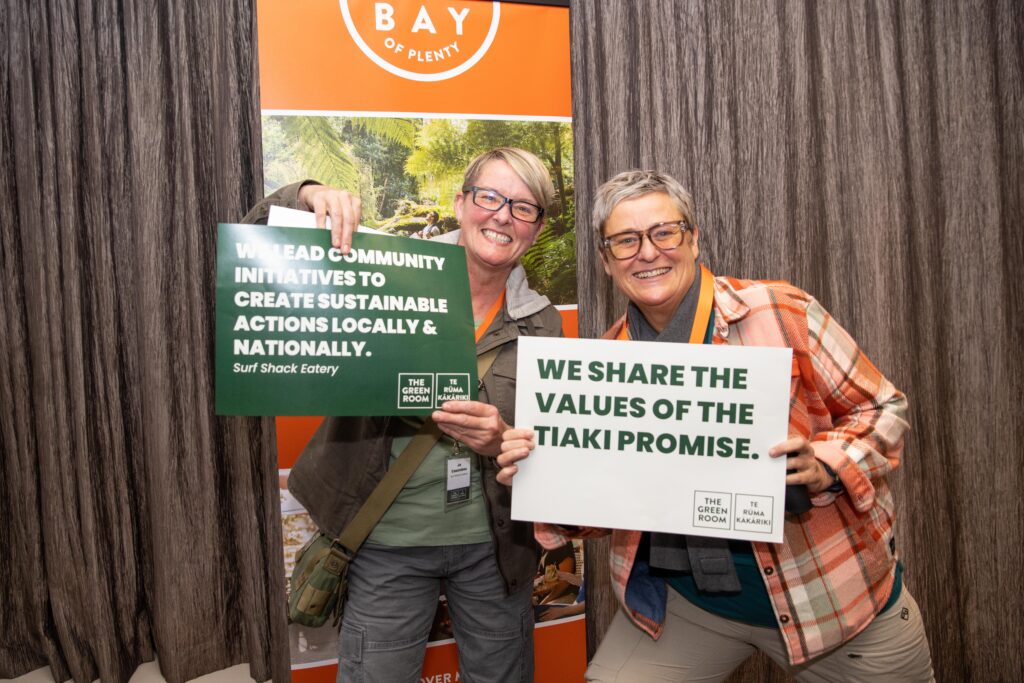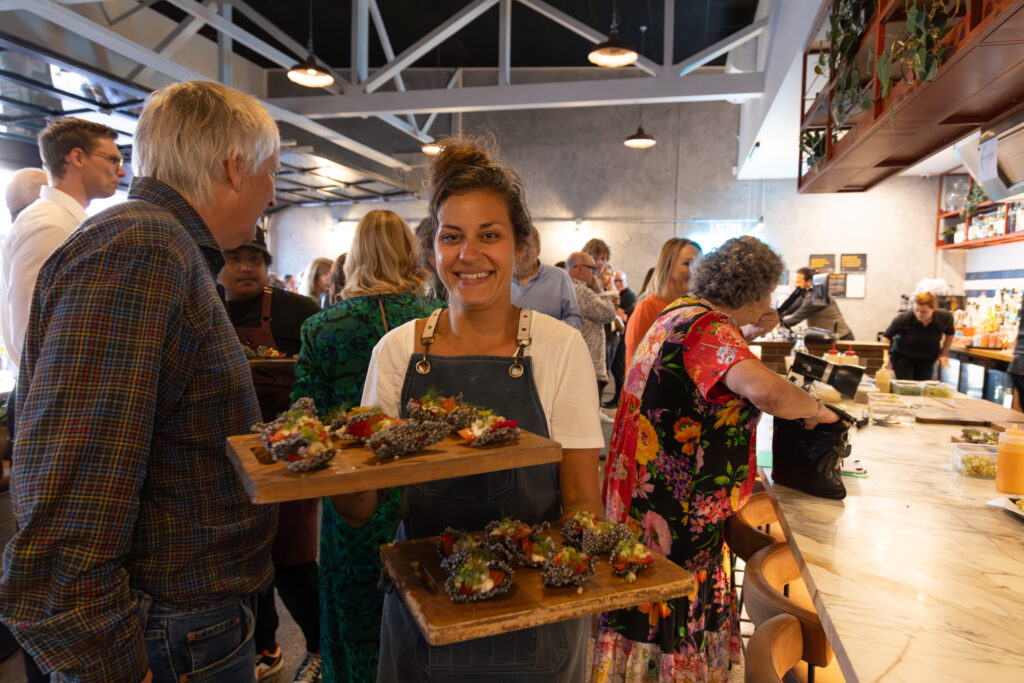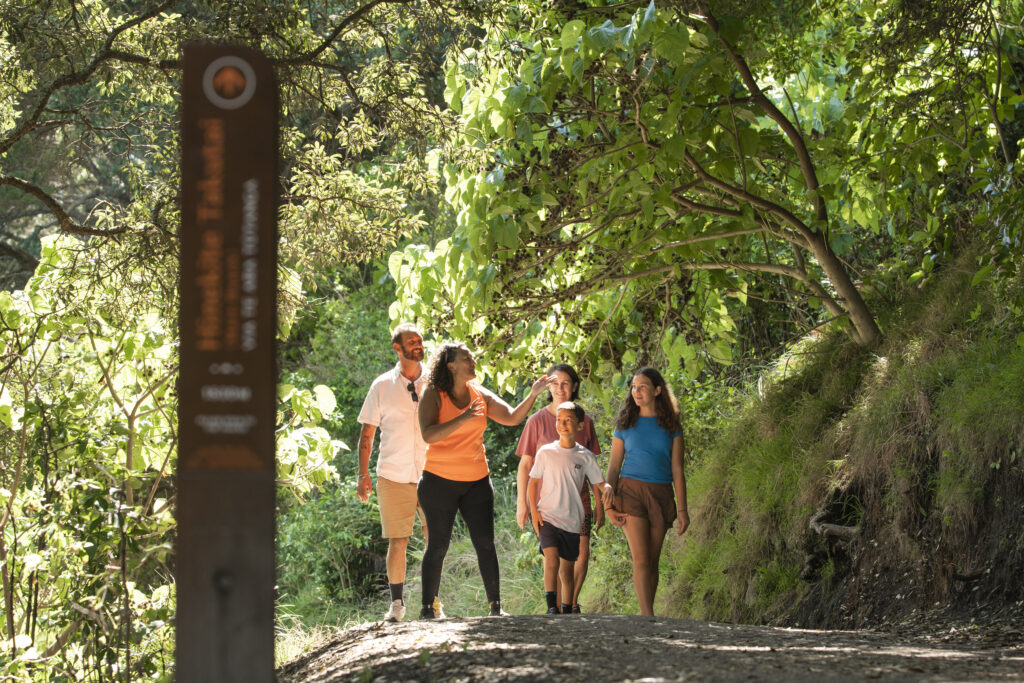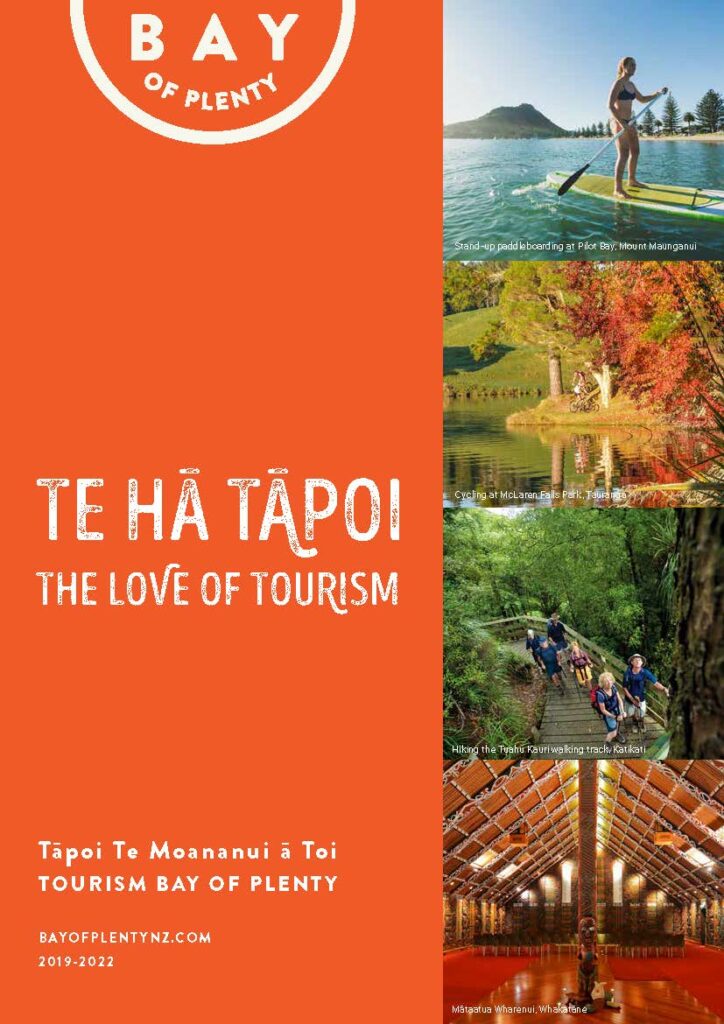THE VISION
To lead the prosperity of our people and place through tourism.
Case Study Themes
Destination Management, Sustainability, Collaboration, Leadership, Community.
Destination Website
Share
Highlights:
The Difference a Plan can make
The Green Room: a sustainability programme that educates and supports Coastal Bay of Plenty tourism and hospitality operators to adopt holistic sustainability practices.
Flavours of Plenty: a grassroots collective which celebrates and showcases the Coastal Bay of Plenty’s abundant culinary heritage and expertise, highlighting local food and beverage producers, unique regional flavours, and Māori cultural traditions.
Stronger relationships with mana whenua have been forged and this has prompted an increase in Māori-led tourism experiences
Infrastructure projects are being undertaken to reduce pressure on high-traffic areas while also promoting lesser-known attractions across the region.
Engagement efforts are helping Bay of Plenty locals understand the importance of tourism, making them more likely to advocate for it.
Tourism Bay of Plenty Case Study
Connections, leadership and kai: the Coastal Bay of Plenty’s trailblazing approach to destination management
One of the first in New Zealand to deliver a destination management plan in 2019, Tourism Bay of Plenty has since won widespread acclaim for its ‘regenerative’ approach to tourism and impactful regional initiatives.
Perhaps its best-known project so far is the Flavours of Plenty collective, showcasing the region’s culinary delights. The event, designed to elevate the region’s horticultural and food sectors and spread visitor spending across the whole region, including smaller rural towns, won the 2024 New Zealand Tourism Award for Industry Collaboration and Alignment.
Tourism Bay of Plenty’s sustainability programme The Green Room | Te Rūma Kākāriki was a finalist in the same award category, recognising its innovative capability-building approach that prompted local leaders, influencers and mana whenua to deliver sustainability workshops and training for the region’s tourism businesses.
Tourism Bay of Plenty Head of Destination Management Mary Tolley says these stand-out projects are just two examples of initiatives that have come about as a result of the region’s Te Hā Tāpoi – The Love of Tourism destination management plan (DMP).
“These kinds of platforms have the potential to elevate our communities and take tourism to a whole new level in our region. They are all part of our ongoing efforts to make sure Bay of Plenty’s visitor sector leaves a positive legacy for our people, place and environment.”
Pressure points
Mary says the roots of the region’s destination management approach can be traced back to what was happening in the Bay of Plenty tourism scene a decade ago. Locals had become increasingly conscious of the large number of visitors flocking to the region over summer, particularly to high-profile areas like Mount Maunganui, leading to serious congestion and pressure on infrastructure and the environment.
There was also growing awareness about the seasonality of visits, with many local businesses finding the going tough during the winter months, when they typically experienced a noticeable reduction in visitors. Visits from cruise ships were great for the ports they visited, but the potential to disperse the concentration of visitors was recognised as an untapped opportunity to reduce the local impact and share the benefit, Mary says.

Tourism Bay of Plenty’s sustainability programme – The Green Room.
A plan is formed
These factors led Tourism Bay of Plenty to create its 10-year Visitor Economy Strategy 2018-2028. That strategy was one of the first in New Zealand to promote a regenerative tourism model, with emphasis on balancing tourism’s benefits with the impact it can have on the environment and communities.
The holistic Te Hā Tāpoi – The Love of Tourism destination management plan followed shortly after, as part of the national movement towards destination management, with funding support from central government.
Tourism strategy experts Destination Think were engaged to help define the Place DNA, or unique essence of the Bay of Plenty, to shape the vision and define long-term objectives for the new plan.
When it was published in 2019, Tourism Bay of Plenty’s destination management plan was “one of the first cabs off the rank nationally”, Mary says.
She says one of the most important parts of the plan has been the “people element” – getting engagement from the community to secure their buy-in, especially from those who had been negatively affected by high visitor numbers.
“Before the plan was introduced, we didn’t really have the connectivity with the community on the ground.”

Flavours of Plenty Festival.
The plan proves its worth
Mary says five years after the DMP and the new regenerative tourism approach was introduced, there is now significantly more local support for the region’s tourism industry.
“When you start collaborating, connecting and telling the stories of people and businesses in your community that host visitors, whether they’re restaurants, cafés, shops, a dairy, or a taxi driver, everyone becomes an advocate for tourism in the region.”
Community engagement has driven more meaningful connections with mana whenua, leading to collaborative efforts to protecting the environment from negative impacts of tourism and build Māori tourism businesses’ capability, she says.
“One of the biggest things for me is for me on this whole destination management journey has been the connectivity tourism has and the role that it can play within communities and giving back to communities that give back to the environment.”
Better relationships with Māori have led to more of the region’s cultural stories being told and mana whenua creating more experiences for visitors to enjoy, such as Māori-led tours around Mount Maunganui, she says.
“The understanding of the positive impact tourism can play is evident from the evolving growth in cultural experiences and tourism experiences within our region.”
This work is also generating more career options for rangatahi who want to live and work within their home region when they leave school.
The Flavours of Plenty collective has been helping to connect growers to restaurants as it celebrates the Bay of Plenty’s wealth of exceptional food and beverages.
Its annual festival encourages local chefs to create unique culinary experiences and inspires visitors to explore the region’s diverse offerings.
It has also been a popular addition to the foodie calendar for Bay of Plenty locals, demonstrating that initiatives designed with the imperatives of the destination management plan in mind often provide tangible benefits for residents.
Mary says The Green Room | Te Rūma Kākāriki initiative has supported businesses to elevate themselves and stand out from the crowd when it comes to regenerative tourism.
Additionally, the more than 100 businesses that have gone through the programme benefitted by identifying and sharing how they are giving back to the community while becoming more aware of additional actions they can take to protect the environment, support employees and delight customers.
Another success has been the comprehensive way cruise ship passengers are supported at the Port of Tauranga. A temporary isite visitor centre operates at the port during the October to May cruise ship season, with staff providing useful information to passengers, including the region’s Māori history and shore excursion options.
Mary says this helps disperse cruise ship passengers further within the region, giving them a richer experience during their visit and ensuring the benefits of their spending are enjoyed by smaller communities across the Bay, as well as in nearby Mount Maunganui and Tauranga.
This intentional dispersal has been made easier through the strong relationships the regional tourism organisation has developed with the New Zealand Cruise Association –Tourism Bay of Plenty’s General Manager, Oscar Nathan, is on the Association’s board – as well as individual cruise lines visiting the port.
“Oscar’s advocacy for our DMP has played a key role in ensuring cruise creates the best value possible for our region. He has explained our destination management approach to the cruise sector, so they understand our regional needs and, conversely, he has outlined the great value cruise brings to the Bay of Plenty to all touch points within our community, so everyone is on the same page.”

TBOP has worked with mana whenua and seen an increase in Māori-led tourism experiences.
Keeping the momentum going
In the years ahead, Mary says Tourism Bay of Plenty intends to build on the momentum it has generated and will make a concerted effort to gather more visitor and impact data to inform vital decision making which will shape the tourism landscape.
This will not only allow Tourism Bay of Plenty to determine which communities are being the most positively or negatively affected by tourism, it will also assist infrastructure planning by identifying where supporting facilities such as parking, toilets and signage might be needed in future.
One of the secrets of any successful destination management plan is that it has to be “resilient and adaptive”, Mary says, so continuing to listen to community feedback and adapting to changes in the environment will continue to be important. When its initial DMP was created, no one could have foreseen the Covid-19 pandemic and the resulting 2.5-year period of travel and border restrictions in New Zealand, demonstrating just how quickly circumstances can change. Because of this, regular reviews and updates have proven to be important throughout the implementation phase of a DMP, to ensure it is continuing to reflect current needs.
Mary says the Coastal Bay of Plenty’s plan has demonstrated the power local people have to put the wind in the sails of regional tourism, once advocacy within the community has been created.
“If you don’t build relationships and trust with people in the community to get their support it’s not going to happen, but with that support anything is possible, and we’ve proved that.”


